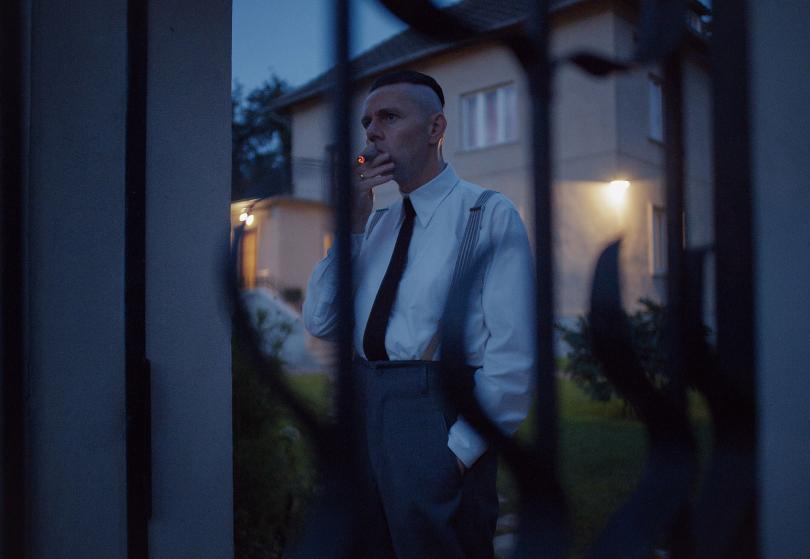In The Area of Interest, Martin Amis explored the monstrosity of ordinary Nazis. In the cinema, Jonathan Glazer does the same thing. However, the film and the novel no longer have much in common…
Canal + will broadcast this evening The Area of Interestpowerful drama of Jonathan Glazer (Birth, Under the Skin…), who left the 2023 Cannes Film Festival with the Grand Prix. Our review is worth reading hereand below, we reshare an article deciphering the adaptation work of the British filmmaker.
Fans of Amis' work who went to see the adaptation that he made of it Jonathan Glazer with The Area of Interest must have, at the start of the film, asked themselves if they had gone to the wrong theater… “adaptive” the novel by Martin Amis, the filmmaker has kept only a few rare elements from the book. The context (a German extermination camp), a Nazi commander, and the Holocaust in the background. It is that the strange nightmarish dive to which we “invited” Amis was, ultimately, just ground zero for Glazer. “An initial spark”, as he recently explained to a journalist from Le Monde: “I was fascinated by the characters, but then I continued the journey in my own way. I still think that in certain places the triviality that I describe can join the grotesque register of the novel.”
In fact, the plot of the book and that of the film have little in common. In The Area of Interestpublished in France in 2015, the bad boy of British letters described the daily life of an extermination camp through baroque and radical farce. The novel followed three characters: Paul Doll, the commander of the place, a horrible libidinous man, notorious alcoholic, who receives convoys without (asking) the slightest question. Doll, partially inspired by Rudolf Höss, was much more debauched than his model – we were at Amis! There was also SS officer Angelus Thomsen, a sex maniac who got a little too close to Doll's wife. And finally, Szmul, a Sonderkommando who served as the commander's sidekick.
These three characters recounted the action in a succession of chapters narrated in the first person, vomited out their depressions, their discomfort or their most intimate impulses and thus allowed the novelist to depict the banality of evil. With a lot of humor (black, grotesque, grating). Far from the imagery of Epinal – the SS aristocrat, decadent scholar – Amis portrayed mediocre petty bourgeois, bad civil servants, obsessed with their N+1s and their evening shots. And a Jew, forced to collaborate in order to survive… The Shoah therefore took place in the shadow of a vaudeville show (or the opposite) and, moving from one point of view to another, Amis drew a symbolic and lamentable story of Nazism. While the masters of the camp wallow in astonishment, thinking only of fucking, drinking or climbing the organizational chart, behind the wall, the Holocaust continues.
The cinema version of The Zone of Interest deviates considerably from the complex construction of the novel and its buffoonish or tragic characters. Glazer keeps the viewer at a distance and opts for a coldly objective vision. Contrary to the book, the filmmaker never crosses the gates of the camp, he instead imagined a “Big Brother in a Nazi House”. This is how he described his filming system (ten cameras hidden in the walls of the house built by the film's production team) which allowed him to focus on the daily life of the Höss family. Yes: we said Höss. Getting rid of the book's fictional biographies – Paul Doll and his wife Hannah – Glazer takes up the real surnames of Rudolf and Hedwig Höss, the real commander of Auschwitz and his wife. It depicts them as the archetypal German family, only hinting at the cracks in their relationship through allusions to Rudolf's extramarital affairs.

Nothing more vulgar here, no more romantic rivalries or pathetic sexual intrigues… Rudolf (played by Christian Friedel) is a man in the prime of his life and at the peak of his career, he resolutely deviates from the portrait of the commander of the novel. Glazer also refashions the character of Hannah, who by (re)becoming Hedwig (Sandra Huller, terrifying) loses a little sex appeal and “amisian” superego, to better embody the Hitlerian ideal of the wife and mother German. In the film, nicknamed “the queen of Auschwitz” by her husband, Hedwig is undoubtedly the most toxic character, and her chilling argument with her husband, who announces her transfer, is inspired by historical documents relating a similar argument between the spouses.
The adaptation of The Area of Interest by Glazer therefore radically departs from the original book; to the point that one almost wonders why Glazer is nominated in the best adaptation category at the Oscars. However, his film remains a suffocating and sordid, unbearable behind closed doors, which has the same purpose as Amis's book: to portray a filthy, monstrous human nature, capable of denying or ignoring the absolute Evil that exists. produced under its windows.
Johnnie Burn, the gifted sound designer of The Zone of Interest
